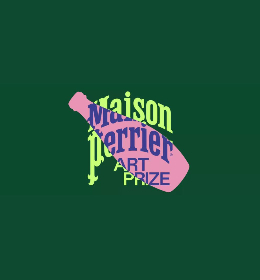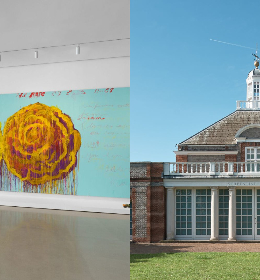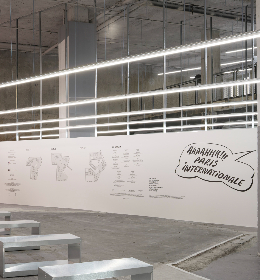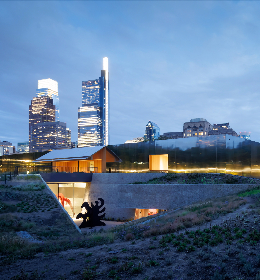Galbreaith’s film installation, Bug Eyes, the second part in a tripartite fiction, continues protagonist Sindee’s post-metamorphosis experience as she joins an experimental “micro-anarchist community” which transpires to be a reality TV show.
These kind of artistic proposals, fantastic and Kakfa-esque, are a real challenge - you really need to immerse the public in your universe. What is key to this challenge?
I think that people are naturally drawn to stories, especially if there is some sort of enigma or puzzle involved, so the fact that I start with a narrative hooks people from the beginning. When I create an installation or an image for the internet I also use colors and sounds that beg for attention; I find it’s necessary to seduce the viewer, to convince them to keep looking, especially when they are constantly already bombarded by videos and images. I feel like I have to compete with all the other images out there, to make people look and to keep looking.

That is also one of the reasons that I use elements of comedy, slapstick and dark humor. When you laugh, you want to stay with the work, to laugh again - it’s addictive. That aspect of seducing the viewer, of sort of controlling them, plays into the story that I’m telling, because there is almost always a feeling of low-key, generalized paranoia in my work, some sort of shadowy government or corporate figure lurking behind the scenes: the puppet master, dressed up in pretty shapes and colors. Afterwards it’s a matter of building up your universe. You have to clearly define the boundaries of the world you’ve created and the strange “logic” that operates within it while at the same time giving the illusion of limitlessness.
It makes me think of the film The Truman Show, where the “town” in which Truman lives is actually quite small and completely fabricated, but because of the effects of the painted sets you can’t see the horizon, so even though you turn in circles inside the space, you feel like it could keep going on forever. I also like to have points where the fabricated story-world bleeds out into the real world. That’s why I like having the same figures or places show up across different media, from video to installation to comics, multiples or Instagram posts. The intertextuality starts building up its own web of stories, like a foundation myth.
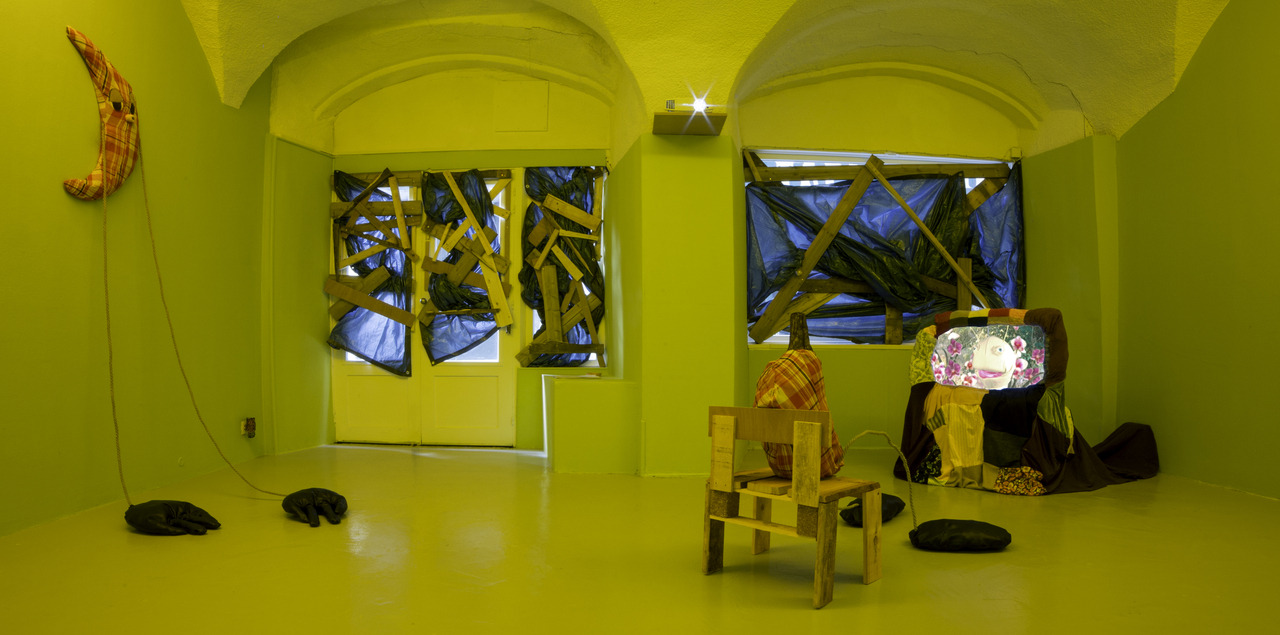
Then you give the impression that there is always more to explore: details hidden within details. But it’s also important to keep the narrative open enough that the viewer can make it their own. The best stories or paintings or songs, you feel like once you’ve read, seen or heard them, they become yours. Maybe eventually some of the characters or worlds I create will be borrowed by other people and become solid enough that they don’t need me anymore to continue living. Or they might evolve, as was the case for the character of Gregor Samsa in the Metamorphosis, who I borrowed and transformed into Sindee in Bug Eyes.
Even if it is counterintuitive, can using pastiche or "burlesque science fiction" to spread a message often be more effective than a clear statement in inviting people to push their reflection and provide a clearer message?
I think so, yes. You see that with Jonathan Swift, or in the slapstick scenes in Shakespeare, or with spoofs on news shows like The Colbert Report in the US or Les Guignols in France. Some classic examples of “burlesque science fiction” that also act as social criticism would be Charlie Chaplin’s Modern Times, Douglas Adam’s The Hitchhiker’s Guide to the Galaxy, or Terry Pratchett’s Discworld series...
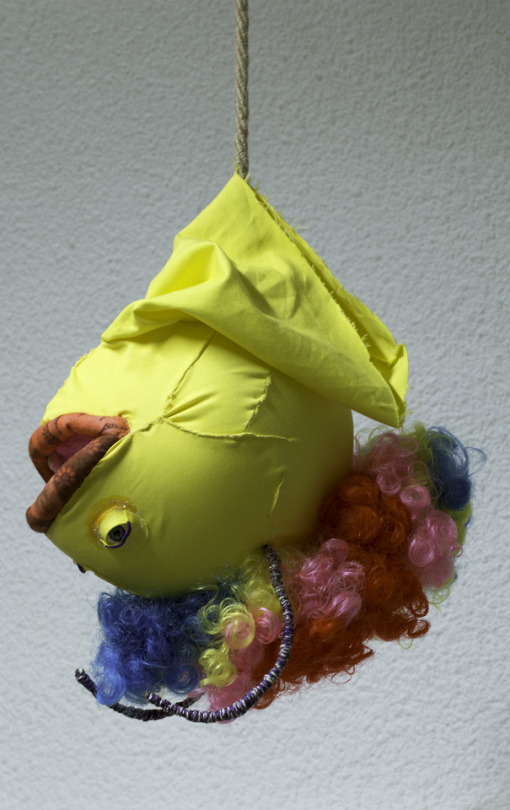
Humor and exaggeration can crack or dissolve the rigid borders that people put up around their beliefs, in order to open up a playful space for testing ideas or for illuminating the ridiculousness of a policy or a way of doing things. That being said, I don’t think that it is the role of art to push a specific message, and that’s not what I try to do with my work. I simply observe the world around me and my own and other’s reaction to it and that generates stories and images. I’m very drawn to points of contradiction and absurdity, and I think that burlesque science fiction and pastiche are the best way to reflect the absurdity of existence. Science fiction provides a way to test realities or ways of living that are maybe possible futures or maybe mirrors of the present, and pastiche allows for contradictory mental states to coexist in the same action. Take one of the oldest jokes in vaudeville and burlesque, where someone slips on a banana peel and falls. This stupid and banal situation—a banana peel left on the ground—takes on an almost cosmic scale. The moment of falling is a moment of danger; the person could be seriously injured. If they die, it’s not funny; it’s tragedy. But they get up and brush themselves off, and instead of being a tragedy the fall becomes a joke. And in it there are suspended two very different aspects of life: that of lightness and smiles and that of danger and potential death. It’s the exaggerated, clownish approach to a banal situation—a banana peel left on the ground and a person stepping on it—that creates this space where these contradictory points of comedy and tragedy can coexist. I wouldn’t say that it creates a “clear” message, and I think that that’s a good thing, because what in life is really clear? Only propaganda and advertising aim for a clear message. And neither of these push people to think; to the contrary, they impose a way of thinking. Burlesque and pastiche, on the other hand, when coupled with science fiction or social commentary, can invite people to push their own reflection, because they form this space where ambiguities and contradictions can live together.
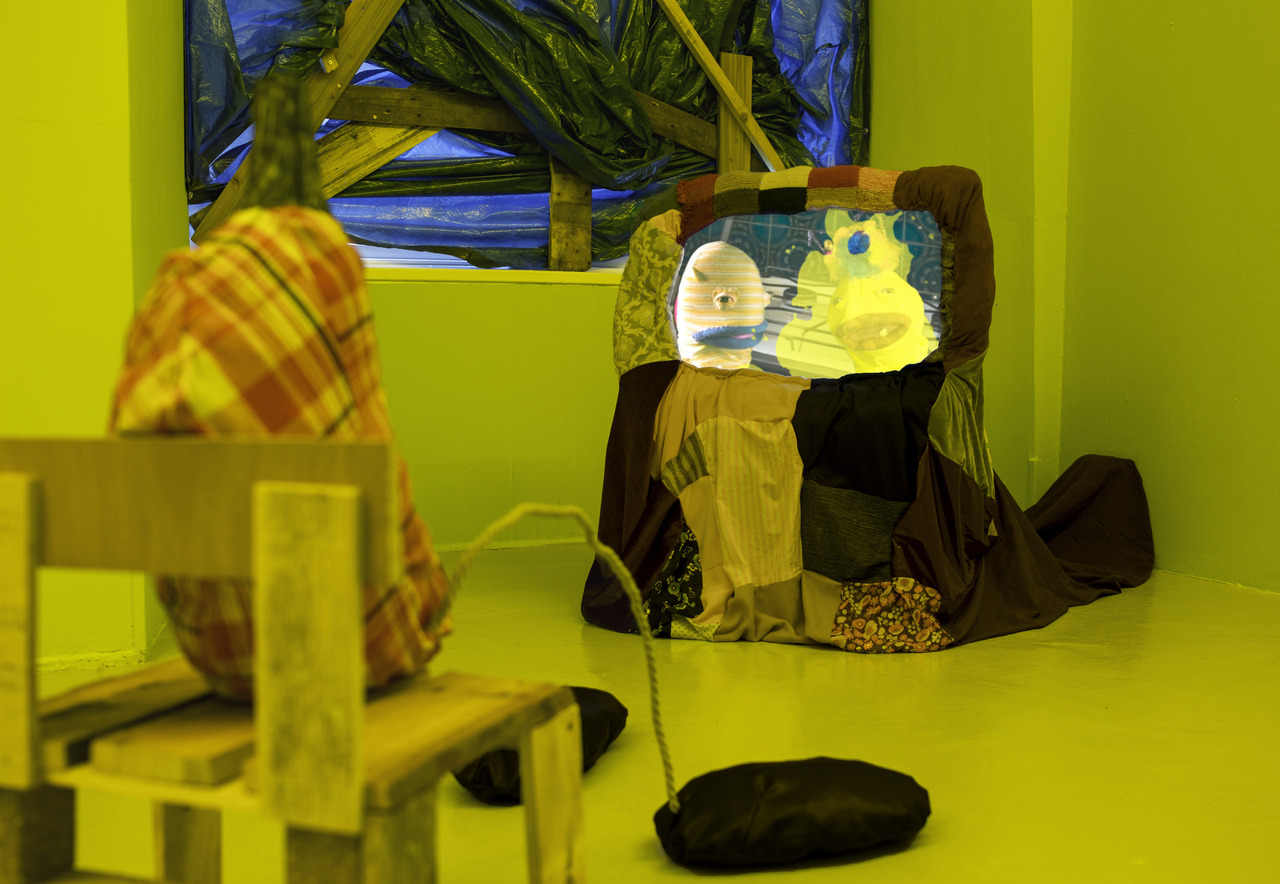
In Extenso — Photos : Michaël Collet





